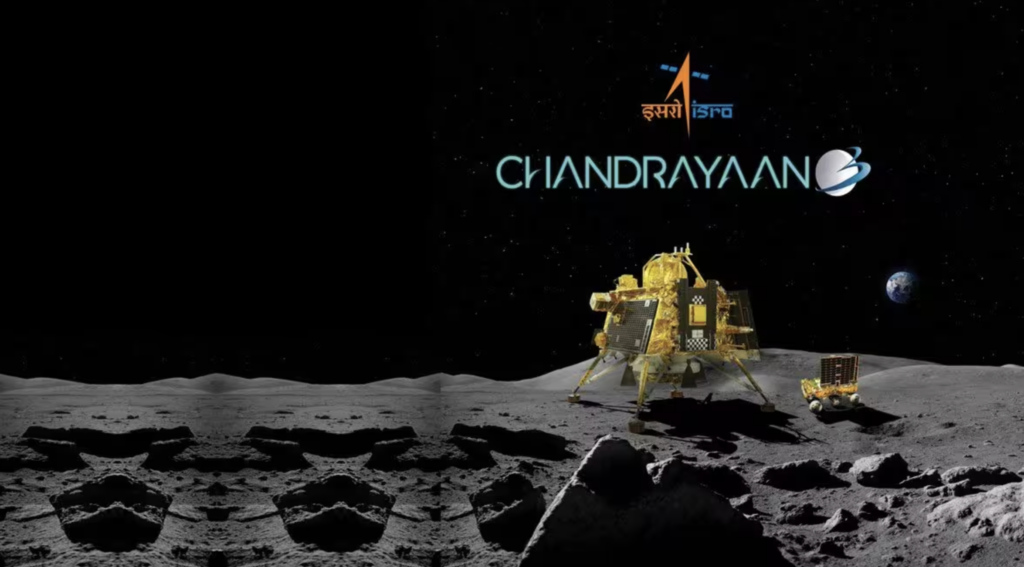In a historic achievement, India has etched its name in the annals of space exploration by successfully landing a spacecraft on the lunar south pole. The Chandrayaan-3 mission, launched from a spaceport in Andhra Pradesh, accomplished the remarkable feat of touching down on a region of the moon’s surface believed to harbor water ice within deep craters. The momentous event unfolded six weeks after the launch, marking a significant milestone for India’s space endeavors.

Prime Minister Modi’s Pride and Global Aspirations
As the spacecraft gently descended onto the lunar surface, mission control at the Satish Dhawan Space Centre erupted in cheers and applause. Prime Minister Narendra Modi, deeply invested in the achievement, participated in a conference call at the space center to witness the historic landing.
With a small Indian flag in hand, Prime Minister Modi expressed his pride in addressing the Indian Space Research Organisation (ISRO). He stated, “This is the heartbeat of 1.4 billion people. This is the new India, the new beginning, the new thinking of new efforts. This is a feature of the shine of India – we made a promise and we made it true on the surface of the moon.” Prime Minister Modi’s sentiments extended globally as he emphasized that India’s success is an inspiration for all nations to reach for the stars and explore beyond.
Historic day for India's space sector. Congratulations to @isro for the remarkable success of Chandrayaan-3 lunar mission. https://t.co/F1UrgJklfp
— Narendra Modi (@narendramodi) August 23, 2023
Exploration Aims and Future Prospects
India’s achievement holds tremendous promise for future lunar exploration endeavors. The successful Chandrayaan-3 landing paves the way for prospective missions, including potential human flight missions to the moon. Thousands of Indians across the nation eagerly awaited the outcome of the mission, reflecting the widespread enthusiasm and interest in space exploration.
Next Steps: Chandrayaan-3’s Scientific Endeavors
Unveiling Lunar Secrets
Following its triumphant landing, Chandrayaan-3 is poised for a phase of scientific inquiry. However, the operational window for the spacecraft’s scientific activities is limited to two weeks. During this period, a series of experiments will be conducted to decipher the mineral composition of the lunar surface. The centerpiece of these investigations is a rover, which will be deployed by the spacecraft’s two-meter-high lander.
Quest for Water Ice and Permanence
The scientific community’s keen interest in water ice takes center stage in Chandrayaan-3’s research agenda. Water ice holds multifaceted significance, potentially serving as a resource for fuel, oxygen, and even drinking water. The mission’s findings could lay the groundwork for establishing a sustainable and enduring lunar base. The rover’s role in these explorations is pivotal, as it embarks on the task of gathering essential data from the moon’s surface.
Global Context: India’s Triumph Amidst Challenges
Stepping Stones Over Past Obstacles
India’s triumph in lunar exploration follows previous endeavors that faced challenges. Notably, Russia’s Luna-25 mission encountered failure as its spacecraft crashed into the lunar surface. Prior attempts by India also encountered setbacks, with the formidable terrain of the lunar south pole posing considerable challenges for landing.
In this historic moment, India stands as a beacon of success, igniting aspirations for space exploration and collaboration on a global scale.













